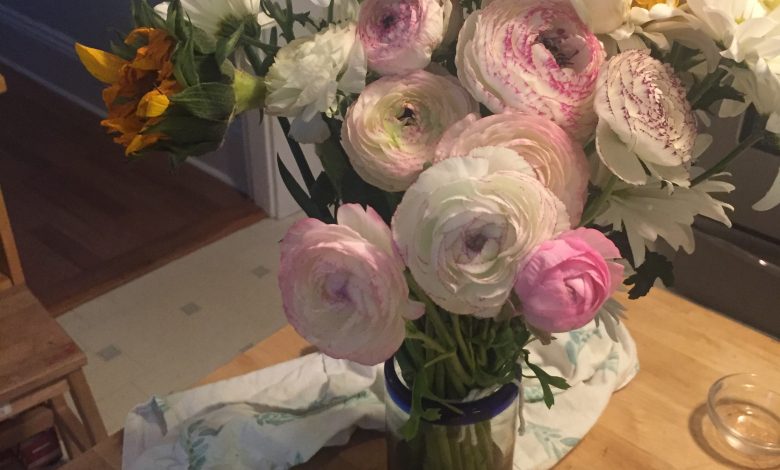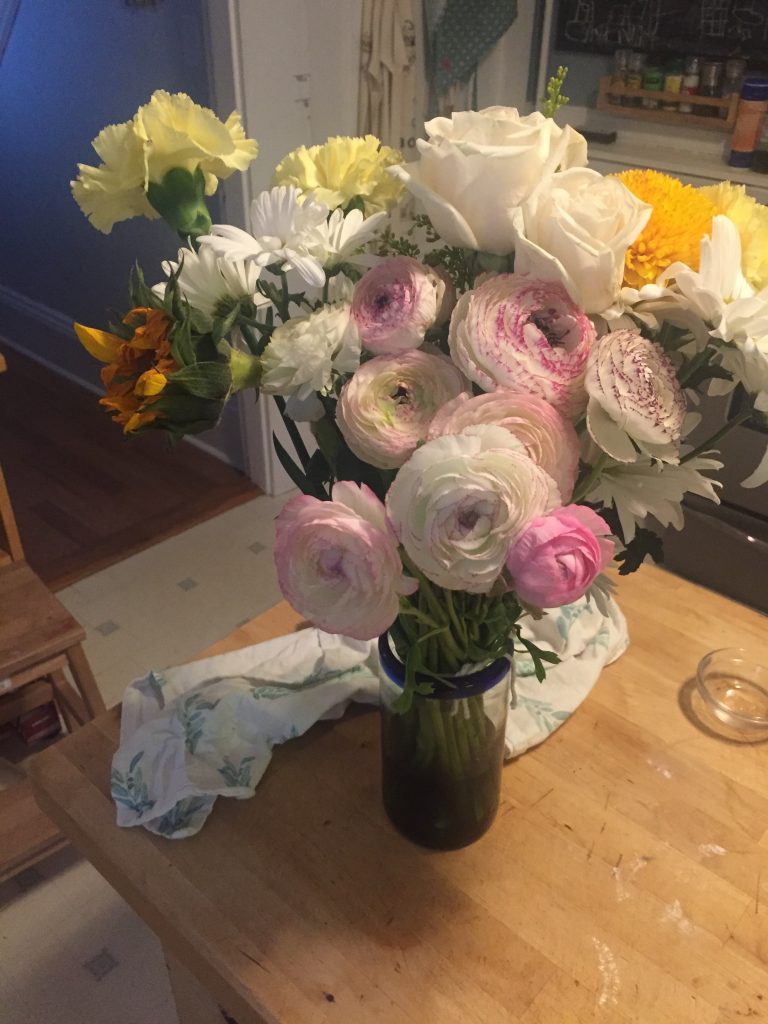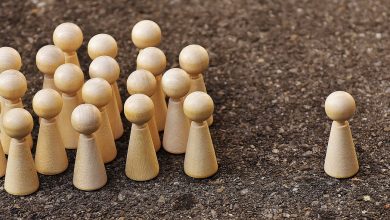Science Experiments At Home: A Variation on the Carnation Food Dye Test

Whether you’re stuck at home with the kids or not, this is a pretty neat experiment to try out–and a great opportunity to have your kids experience the scientific process. Science is not just about knowing how electricity works or what happens when you combine vinegar and baking soda–it’s a process by which we ask questions and figure out how to answer them. For example, I always say that babies are the best scientists. When they want to know what something tastes like, they put it in their mouth! And they like to conduct tests on what happens when they drop something off the high chair. So when I teach science to my children, I start with them just asking questions (and later stating their hypothesis).
I don’t know if you’ve ever seen the carnation food dye experiment, but if you haven’t here it is: you take some white carnations, put them in different vases, and add water that has been colored with food dye. Over a day or so, the carnations will suck up the liquid, and you should see a color change in the petals. Pretty cool! If you want to start with that, you can find more instructions here.
Here’s my variation of that experiment. I know how the carnation experiment works, but does it work for all flowers? Also, how will the dye affect colored flowers? Ask your own questions and make your own predictions and see what happens!
To test my questions, here’s what I did:
- Get a nice bouquet of white/light-colored flowers (roses, daisies, ranunculus, sunflowers, and a carnation as a control)
- Immediately cut 1 inch off of the stems at a 45 degree angle (getting rid of dried ends and maximizing the amount of water sucked up)
- Add lukewarm water* to the vase with 5-10 drops of blue food coloring (I chose this color because I have pink and yellow flowers and the blue will stick out)
- Take pictures and just wait to see what happens
*Note: if there are any leaves below the water line, make sure you strip those off before you leave in the water, and also change your water daily so that your flowers will live the longest. I usually use the food packet that comes with the flowers to make a batch of water on the side and just refill with some of that every day (2-3 inches of water in the vase should be fine).

You can’t see much in the picture above but I have already seen a couple of blue dots show up on the white roses after 1 day.
If you want, take the time to create a chart with your children and ask them what their predictions are. Which flowers will get colored first? Which flowers will get the most color? Will the food dye color show up on the non-white flowers, and if it does will it combine to make new colors? Or, you could do another experiment on the side, and add 2 drops of food coloring vs 10 drops and see if that makes a difference in the rate.




